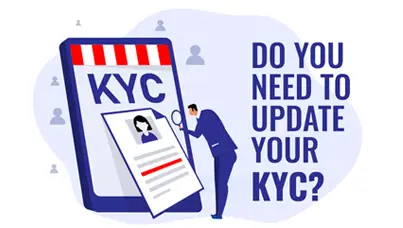Arbuthnot to Lehman; Much has changed, Much has remained same
Posted On Wednesday, Oct 03, 2018
I left office early one evening to help my daughter with her studies. While she was revising, I was by her side looking out of the large window and lost in my thoughts.. A mild cool breeze flowed in as the dusk was setting in. I could see the grey sky with some pockets of dark clouds. At a distance I could see vehicles moving on a bridge and beyond that a touch of orange color in the sky, casting shadows of the glass skyscrapers there. The silhouettes reminded me of the New York World Trade Centre buildings which went down in September 2001.
My thoughts then lingered on the newspaper articles and took me back to 2008, when the 130-year-old bank Lehman Brothers went bankrupt. The size and scale of its operation was such that it shook the financial system across the globe and left families and businesses bankrupt. I ruminated on the fate of those families whose plans for their daughter’s wedding, education, or travel got wrecked. My thoughts wandered to the retired who were forced to get back to work as they lost their life’s savings. The young who managed to get their first job after their education lost it as, not only Lehman but due to the shockwaves that it sent ripping through the global financial system, many firms closed or were very close to becoming bankrupt. The young who got married that year and were impacted by the crises decided never to have children; given the uncertainty around. The worst affected were those in the age group of 45-55 years as they lost their jobs and no one was ready to recruit them for their skill set. Everything from creativity to innovation took a back seat. While I was reading about the crisis, it was not an academic exercise; it had hard impact on real people.
The side effects of the crises were felt in European and Asian countries as well. Indian stock market that year declined by 60%.
“How could this happen?” a 150+ year old firm, one of the darlings of Wall Street - Lehman went bankrupt because a bubble had burst. Edward Chancellor; the author of Devil Take the Hindmost: A History of Financial Speculation writes that “All the great speculative bubbles in the past – from the tulip mania of the 1630s through to the global credit bonanza of the last decade, have occurred at times when interest rates were abnormally low.”.
The bubble was the result of excess currency pumped into the US economy as a measure to counter the possible economic slowdown resulting from the fall of the world trade centre in 2001.
Excess currency with the banks means pressure to lend. As new quality borrowers reduced, banks compromised and lent to borrowers who were not qualified to repay. The lending resulted in unsustainable home prices. The bubble eventually ended with well-known names like Bear Sterns and Lehman going down despite their rich long history. Even behemoths like Citibank and AIG had to appeal for Government support and intervention. Global giants of the day ceased to exist the next – or do as mere shadows of their former selves.
There are enough historical events on bubbles and speculation. Yet, it did not stop an event like Lehman. When human emotions like greed and fear come into play, past lessons are quickly forgotten and new players come and repeat the history. As Chancellor writes, It is not about just excess liquidity and leverage; it is also about stories spun around that time.
Each crisis gets resolved and there are lessons to be learnt. But they repeat in different forms, shapes and sizes. I knew of many financial scams and bankruptcy. Out of curiosity I randomly checked for events about 100 years ago. As I went through the editorials of The Hindu I found the case off Arbuthnot & Co going bankrupt in the last quarter of 1906. It was a bank frequented by traders and one Sunday it suddenly declared bankruptcy.
Picture this; a combination of rains, sultry weather, and medium sized building, structures that looked like an extended arm of a village, swaying coconut trees is how Chennai would have looked like in early 1900. The Arbuthnot Bank crash led to the fall of Arbuthnot & Co, a premier British-owned financial institution in Madras Presidency, British India in October 1906. The incident is considered to be one of the key events which influenced the Indian independence movement in Tamil Nadu (source; Wikipedia).
Macfadyen, one of the partners, engaged in speculation, in the process losing huge amounts of the firm's money. Prior to its collapse, Arbuthnot’s employed between 11,000 and 12,000 people (huge numbers for that time), had 7,000 creditors and £1,000,000 in liabilities. It was ascertained that the liabilities of Macfadyen's were £400,000 and there were 1,000 creditors. It was agreed by the English trustee in bankruptcy and the official assignee all creditors were to be entitled to share rate ably in the pooled assets.
There were heart rending stories of wealthy merchants and the common man alike depositing money in their savings account just a day earlier. There were families where weddings had to be cancelled at the last minute or education plans hit as the money deposited in the bank simply vanished. Macfadyen committed suicide by throwing himself under a train in 1906. Both Macfadyen and Arbuthnot were consistently over-optimistic concerning their speculations. Arbuthnot was tried for the fraudulent activities the collapse revealed, and received a sentence of "18 months rigorous imprisonment". There are other cases in these 100 years each resulting in different solutions and lessons.
Now what?I am sure that we have not resolved the problems created by the Lehman crises. To me it appears that the bubble of 2008 was not allowed to burst completely; and there could be trouble brewing ahead. To resolve the 2008 crises Governments with help from Central bankers printed currency to buy the bad assets from the banks. This excess currency since 2008 has resulted in higher stock and bond prices the world over. Risky debt instruments have been priced at close to 0% yield or less than 0% yields.
The question is unanswered as to what happens when currency printing is stopped and the excess currency is withdrawn. This scene is like imagining the air being removed from a hot air balloon. It is expected that the withdrawal will be smooth. The withdrawal may not be smooth as experiments of this kind have never been done. To give a perspective the balance of US banks has increased from USD 4 trillion to more than USD 17 trillion over the last ten years.
The key takeaways are;1. History rhymes - events will always repeat.
2. The players differ. New players have no idea of past events, or worse choose to ignore them thinking “this time it is different”. Hence history repeats.
3. In the 100 year old case someone was made accountable and sent to jail.
4. In the 2008 case no one was arrested or punished.
5. In the 100 year old case the private entrepreneurs and their creditors lost money.
6. In the 2008 case public tax payers money was used to bail out the bankers.
7. In the 2008 case the actions of the government by way of loose monetary policy resulted in huge wealth disparity.
8. Systems are fragile. We need to be alert where we keep our money. No institution is guaranteed to be safe.
9. Keeping money with someone else entails credit risk. Be careful.
10. Do not invest in products that you do not understand. Not many had much knowledge of the credit derivatives that got banks like Lehman into ruin.
11. Do not borrow money to invest.
12. Do not be greedy and be tempted to earn that extra return by taking undue risks.
Keep some investment in Gold. It will help protect the plans made for your children.
Related Posts
-

Do You Need to Update Your KYC/Modify KYC?
Posted On Friday, Apr 26, 2024
New KYC Regulation Effective April 1st 2024
Read More -

Are You Stuck in the Past or Ready for a Secure Future?
Posted On Wednesday, Jun 29, 2022
The ever-growing number of mutual fund schemes on offer has made it challenging for investors to select the best and most suitable one.
Read More -

Received an Increment? Step-up Your SIPs
Posted On Wednesday, Jun 01, 2022
For instance, let’s assume that you have registered for a monthly SIP of Rs 5,000 for a 10-year period and later on try to step-up the SIP at an annual frequency, say by Rs 500. In the first year...
Read More



